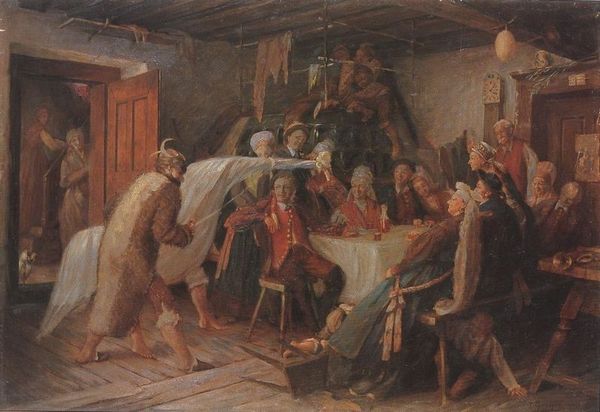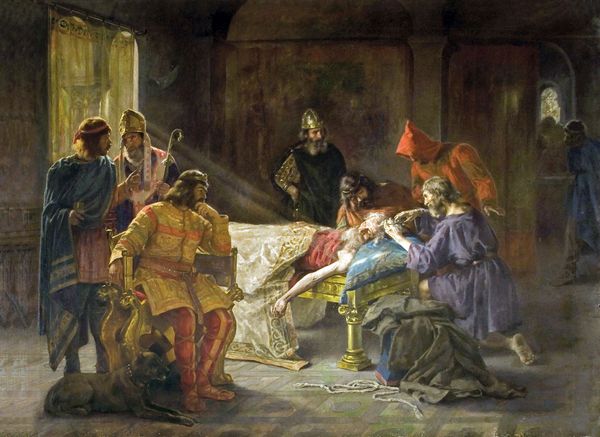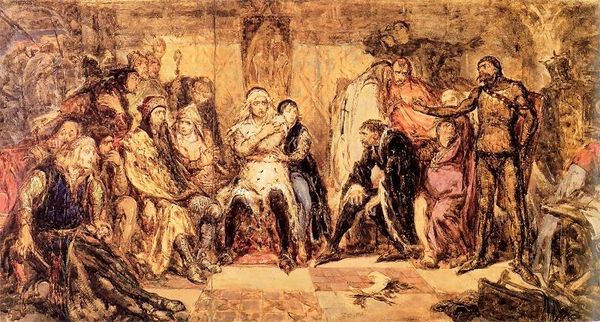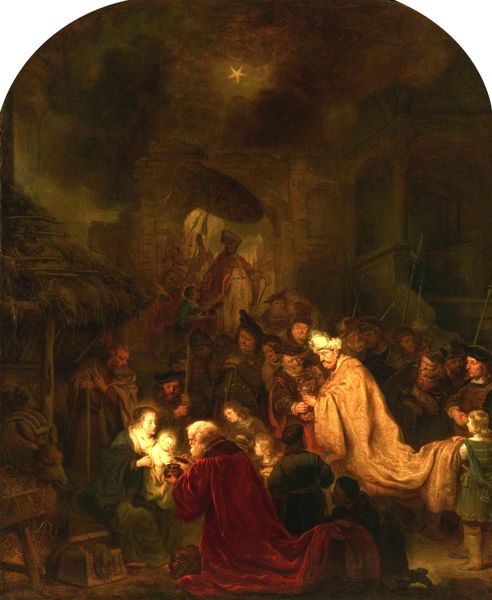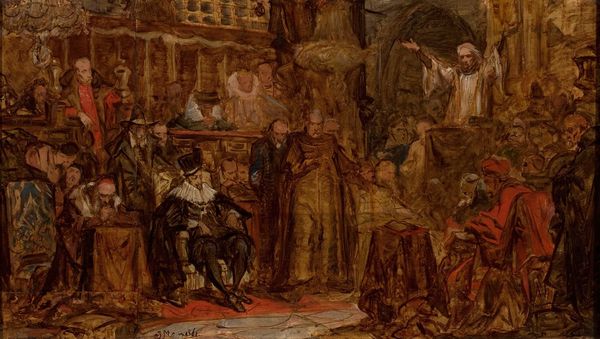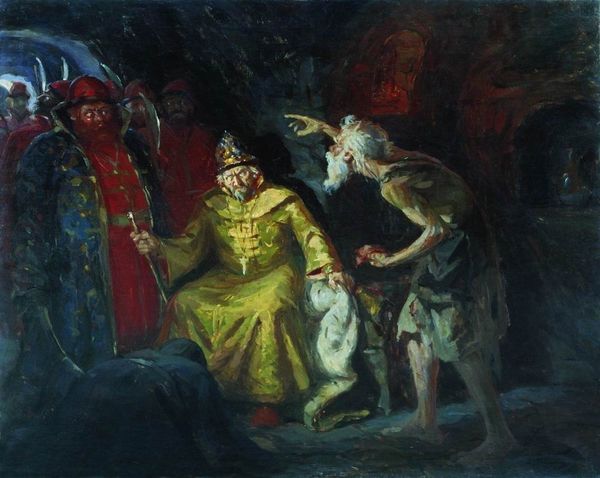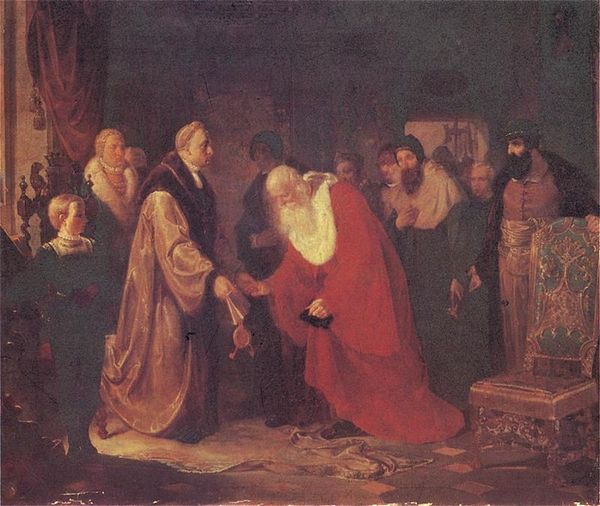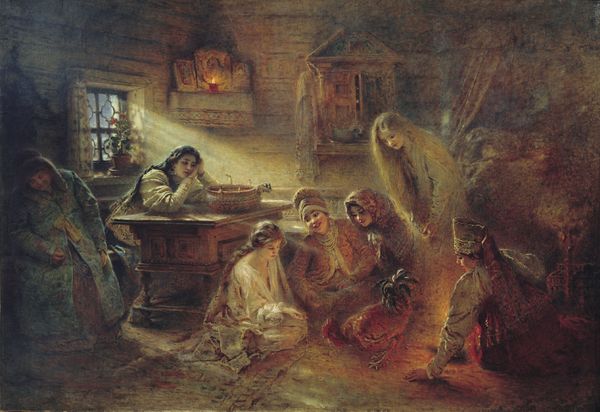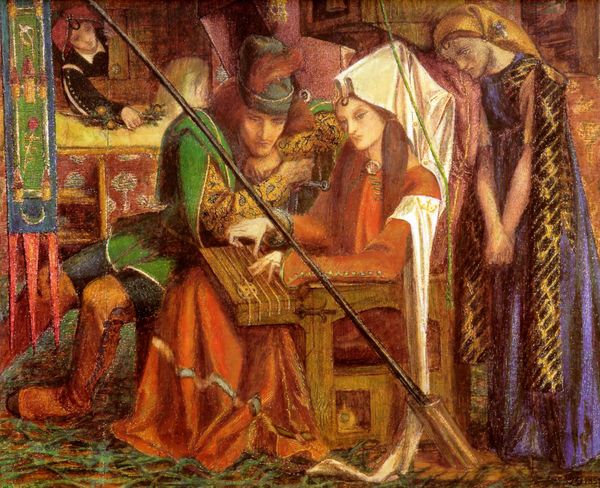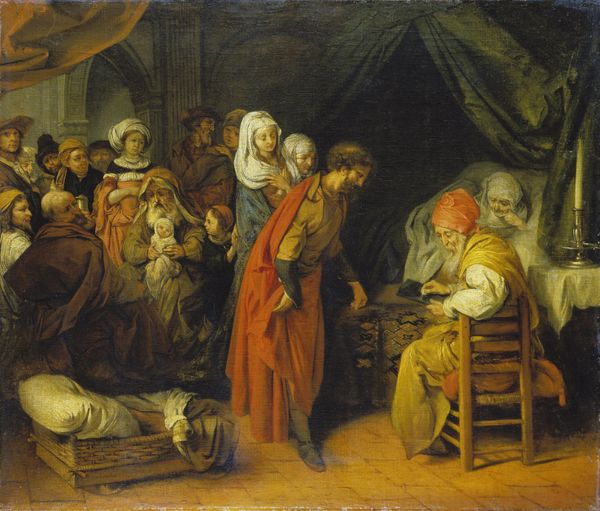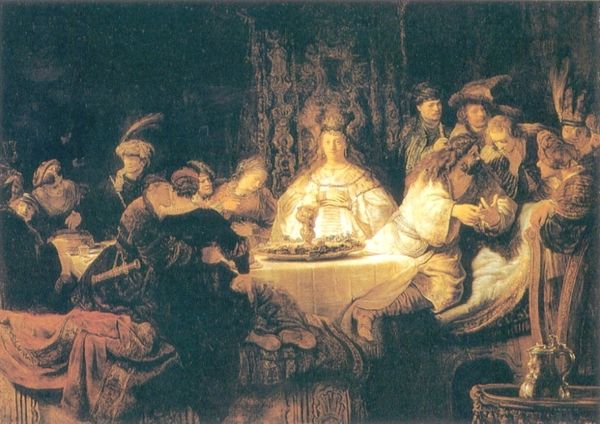
oil-paint
#
oil-paint
#
oil painting
#
romanticism
#
genre-painting
#
realism
Copyright: Public domain
Curator: The artwork before us, executed in oil paint, is titled "Carnival in Athens" by Nikolaos Gyzis. The painting embraces both romanticism and realism. Editor: My first impression is chaos, but a jubilant chaos! The scene is dominated by earthy tones and a flurry of action centered around a table, the tablecloth being one of the few bright white surfaces that is featured. There's a real sense of boisterous energy radiating from the composition. Curator: Indeed. Observe how Gyzis constructs the composition using dynamic brushstrokes and a somewhat limited palette, almost monochrome except for flashes of red. The artist seems to be purposefully obscuring detail. Take, for instance, the way he uses layering to depict multiple planes of space in a single plane of view. It almost entirely flattens the image. This pushes against conventional, western ideals of perspective and invites a conceptual deconstruction. Editor: But consider the symbolic weight! The carnival, traditionally, is a temporary suspension of social norms, a sanctioned period of excess before Lent. Look at the figures—some raise glasses in toast, while others embrace, or even weep. The expressions communicate complex feelings. Are these tears of joy or sorrow? What commentary might the artist be offering on freedom, perhaps the transient nature of freedom in the every-day lived experiences in Athenian culture? Curator: While the theme certainly conveys cultural motifs, the image also raises pertinent formal concerns of visual rhetoric and symbolism. Let's acknowledge the compositional structure--an almost cyclical arrangement. It's a formal achievement but lacks a central orienting visual marker. There are no figures acting as a visual anchor point, per se, as figures drift between distinct emotional states, as you so insightfully highlighted. Editor: And what do you think about the location itself? The low ceiling, dark interiors—almost cavernous—further enhances the idea of a world turned upside down, where the mundane gives way to primal release. The darker elements emphasize the light breaking through from an unidentifiable location within the tavern-like setting, evoking powerful feelings despite being created without bright pigmentation. Curator: These observations concerning the relationship between light and darkness bring to bear the way in which we understand Gyzis to play with shadow as a medium for structural coherence. I contend that these artistic elements must cohere towards generating both depth and flatness to the image. Editor: A beautiful analysis! Reflecting on this energetic artwork together allows for new avenues to appreciate the visual representation and the story that the painting shares. Curator: Indeed. Hopefully our short foray inspires deeper dialogues to take place around art’s potential.
Comments
No comments
Be the first to comment and join the conversation on the ultimate creative platform.
